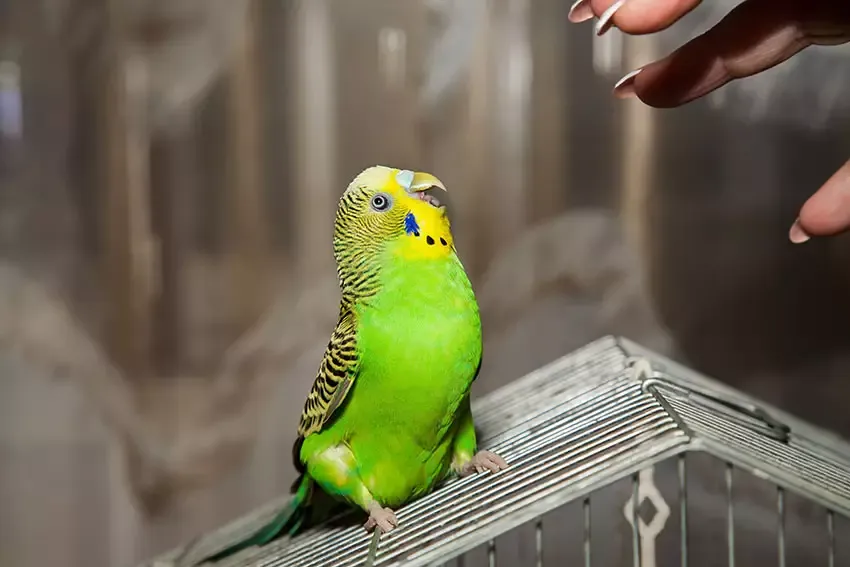Budgies, also known as parakeets, are generally peaceful pets, but Budgie Aggression can occasionally flare up in multi-bird households or aviaries. These small parrots display bursts of temper over food, toys, territory, or mating, which are normal parts of their social dynamics. Most budgie aggression is short-lived and revolves around personal space, feeding, or breeding seasons, where males guard hens jealously and females become territorial. As long as no single bird is persistently targeted, this behavior typically resolves on its own without intervention. Understanding budgie aggression helps owners distinguish between harmless squabbles and issues requiring action, ensuring a harmonious flock.
Normal Causes of Budgie Aggression
In budgie society, aggression is often a surface-level interaction that maintains hierarchy. Cock birds ramp up protectiveness during nest-building and mating, while hens may snap at others encroaching on their space. Overcrowding exacerbates this, leading to clashes over perches or bowls. Hormonal surges from testosterone in males or nesting instincts in females can make dominant birds short-tempered, but these phases pass once the breeding urge subsides.
Food-related skirmishes are the most common trigger—budgies will jostle for prime seeds or millet sprays. Providing multiple feeding stations, wide dishes, or scattered foraging opportunities reduces competition. Territorial disputes arise in tight cages; experts recommend at least 18x18x18 inches per pair for free flight and perches at varying heights. According to avian veterinarians from the Association of Avian Veterinarians (AAV), ample space mimics wild flock behaviors, minimizing stress-induced budgie aggression.
 An aggressive budgie using its beak as a weapon during a territorial dispute
An aggressive budgie using its beak as a weapon during a territorial dispute
If aggression targets one timid bird repeatedly, separation is key. Cage them individually, then reintroduce gradually by placing cages side-by-side for supervised interactions. Incompatible pairs may need permanent solo housing, though supervised playtime fosters bonds. Real-life experience from budgie owners shows that patience during reintroduction—starting with shared out-of-cage time—often restores peace.
Signs of Budgie Aggression to Watch For
Spotting budgie aggression early prevents escalation, especially for new owners mistaking hyperactive play for fights. Budgies are vocal and physical by nature, so look for these distinct indicators:
- Raised wings: A clear threat display, like flexing fists in humans, signaling “back off.”
- Hissing sounds: A deep, throaty warning to intruders.
- Biting feet: Aggressive pecks at toes, unlike gentle mutual preening.
- Feather or head picking: Violent plucking differs from contented grooming; the victim flees quickly.
- Persistent chasing: If one bird hounds another around the cage for minutes, isolate the bully for a week and monitor reintegration.
- Blocking food/water: Brief guarding is normal, but prolonged denial requires extra stations. Hungry birds lose weight, risking health issues like feather plucking.
- New bird bullying: Flocks readjust hierarchies; persistent attacks stem from jealousy. Shower the resident with treats to ease resentment.
- Perch or bowl defense: Overcrowding symptom—upgrade to larger aviaries with 4-6 inches per bird.
Children handling aggressive budgies should avoid fingers in the cage, as nips sting despite minimal damage. Finger-trained birds often calm with millet rewards or gentle petting.
 Budgie displaying open-beak aggression while defending territory in an overcrowded cage
Budgie displaying open-beak aggression while defending territory in an overcrowded cage
Dominant budgies squawk loudly, bite, and posture with flared wings during breakfast bickering in aviaries. Hens in nesting mode mirror this, becoming feisty queens of the roost.
How to Manage and Prevent Budgie Aggression
Prevention starts with environment: rotate toys weekly to curb possessiveness, offer chew blocks for stress relief, and maintain 12-hour light cycles to regulate hormones. During mating seasons (spring/fall), reduce daylight or use non-breeding diets low in fats to dampen urges—consult an avian vet for tailored advice.
If bullying persists, temporary isolation works wonders. Post-separation, neutral territory introductions minimize grudges. Enrichment like puzzle feeders distracts aggressors, promoting foraging over fights. Studies from the Journal of Avian Medicine and Surgery highlight that environmental complexity cuts aggression by 40% in captive flocks.
For single aggressive birds, rule out health issues—pain from mites or infections amplifies irritability. Regular vet check-ups, including fecal tests, ensure underlying causes aren’t fueling budgie aggression.
Conclusion: Fostering a Peaceful Budgie Flock
Budgie aggression is mostly benign, tied to instincts around food, space, and mating, but vigilance protects vulnerable flock members. By recognizing signs like raised wings, chasing, or food guarding, and responding with space, resources, and reintroductions, owners create thriving environments. Always prioritize the timid bird’s well-being and seek avian vet guidance for chronic issues.
Ready to keep your budgies happy? Share your experiences in the comments and explore more budgie care tips on our site!
References
- Association of Avian Veterinarians (AAV): Guidelines on Parrot Behavior (aav.org)
- Journal of Avian Medicine and Surgery: “Environmental Enrichment in Psittacines” (2020 study)
- Omlet Budgie Care Resources (omlet.com)
